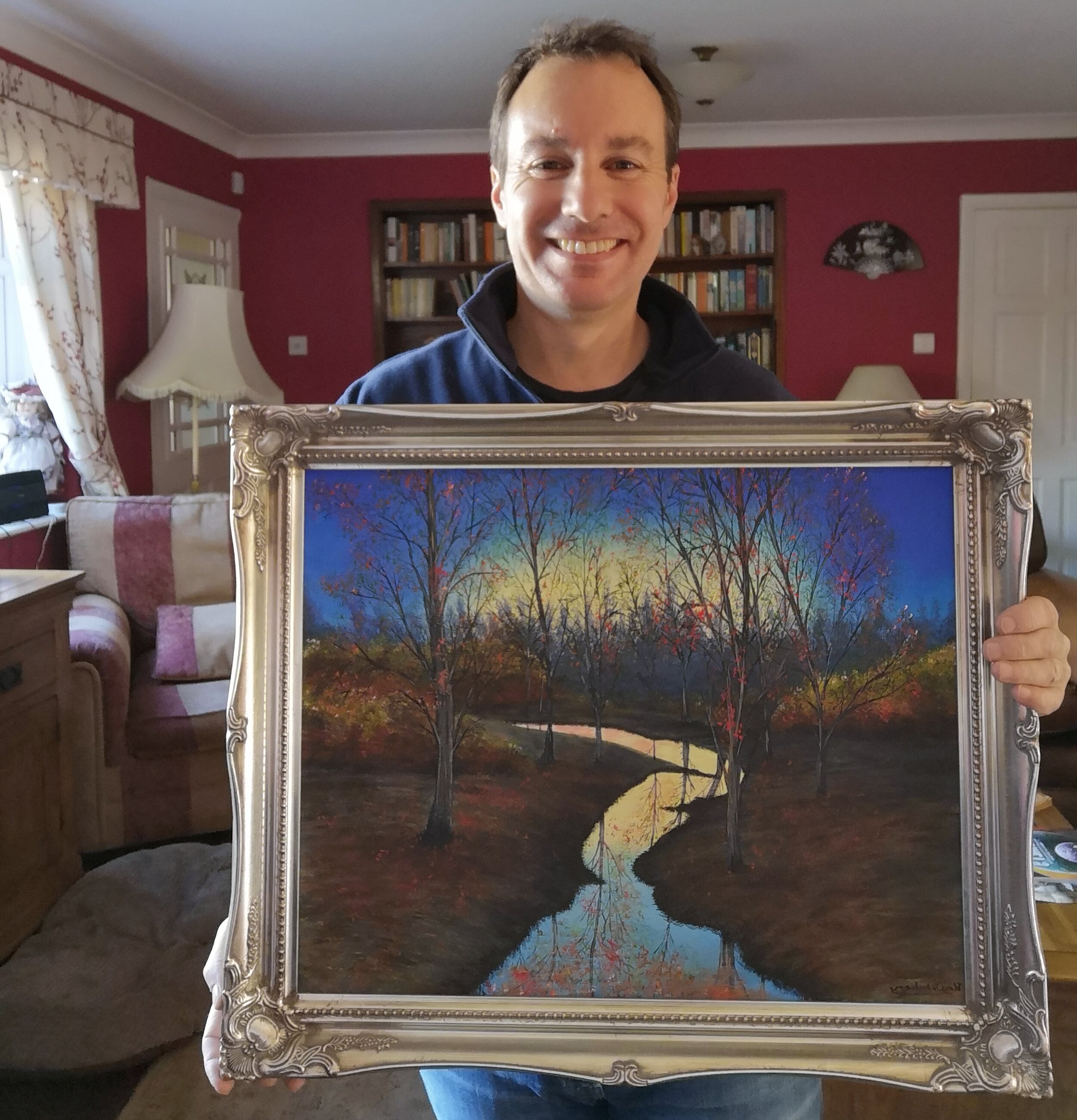How to become an artist - 5 steps to becoming an artist and starting an art career
How to become an artist
5 steps to becoming an artist and starting an art career - learn to sell paintings and artwork
I first picked up a paintbrush on 27th December 2018 having never painted before. I’d never had lessons or any form of tuition or help but I did have a brand new, unused, pan of water colours and some water colour paper. My adventures in art all started when, bored after the excitement of Christmas, I was looking for something to do. Now, I have many hobbies and am forever dabbling in different ones ranging from astronomy, photography, electronics, Raspberry Pi programming…the list goes on and on. So how does that get me to selling paintings and calling myself an artist? Read on my friend, read on.
To alleviate my boredom I opened the water colour set that my wife had bought for me for Christmas two years previous and decided to have a go at painting something. The result was rubbish! Not to be beaten I decided to have another go the following day. It was still rubbish but better than the previous day. And so was the case for the 3rd day. Somewhat frustrated that I wasn’t painting like Van Gogh or Michael Angelo I set myself a personal challenge - to paint something, anything, every single day for 30 days. This was intended to be an experiment to see how my work and ability progressed. So, my first tip on how to become an artist and sell paintings: paint every day, even if it’s small and just for a few minutes, but paint something. Anything.
As I set about painting each day I also spent a lot of time reading articles online on painting techniques and also looked for books on the subject. To augment what I learnt online and in books I also watched many YouTube videos that showed different techniques for both water colour and acrylic. I soon learned what different brushes were for and what interesting effects one could achieve by using unusual tools such as scrunched up foil and ripped sponges and tissue paper. Painting doesn’t have to be with a brush and certainly not just one! So, my second tip to learn how to become an artist: soak up as much information as you can about painting methods and techniques and then put these into practice each day you paint.
Now, a funny thing happens when one does something for 30 days straight, or at least it does to me. The activity becomes a habit, or an addiction depending on how one views it. Either way, I found that after 30 days I felt compelled to paint something every evening. Of course, as I progressed my paintings became more complex and also larger. This meant that I was no longer completing a new and different painting every day but I was still painting every day. The other thing that I noticed was that I didn’t settle on a single genre and actually enjoyed dancing from one subject matter to another. One day it was flowers, then landscapes, then starry skies, then cityscapes and even abstract. My 3rd tip on how to become an artist and sell paintings and artwork: don’t settle on a single genre - have fun by exploring the possibilities of painting anything and everything.
Of course, none of this actually meant that I’d become an artist and I probably still identified more with my day job as research scientist. However, this changed about 6 months into my painting. Yes, by the summer of 2019 I was still painting just about every day. So what changed? Put simply, I posted everything I did on Facebook and Instagram and showed people, mainly friends, what I was up to. People seemed to enjoy seeing the process of producing my paintings and they could also see for themselves how my work was developing. Indeed, some even challenged me to produce specific types of painting, which I loved. After a while I started to get offers to purchase a few of my paintings, which was quite a humbling surprise. But it didn’t stop there. Some people told others about my work and I started to receive requests for specific work to be painted - my first commissions. These quickly grew until my most recent commission which was a 5 feet wide mountain scene which I sold for £800 to a very happy client. I also found that my earlier work also began to sell and I can now honestly claim to have people collecting my art. Some of my paintings have now reached as far afield as Canada and the US! Tip number 4 on how to become an artist and sell your artwork: tell people what you’re doing and show them what you’re up to and encourage them to share.
My final tip on how to become an artist is really quite obvious. You have to put yourself out there! I did my first craft show recently and was not expecting to sell anything but sold 4 paintings one of which needed a credit card reader to complete the transaction! I was so glad I purchased a Square reader! The experience was addictive and great fun and I am now looking to sign up to as many shows throughout the coming year as I possibly can.
Since starting out as an artist I have now sold over 100 paintings, in oils, acrylic and watercolour and completed many paid commissions. Do I self-identify as a research scientist? No, I’m an artist and I’m loving it!
My first painting in December 2018!
A recent commission!


